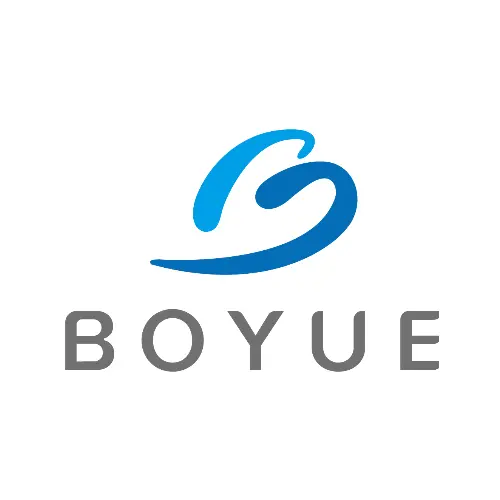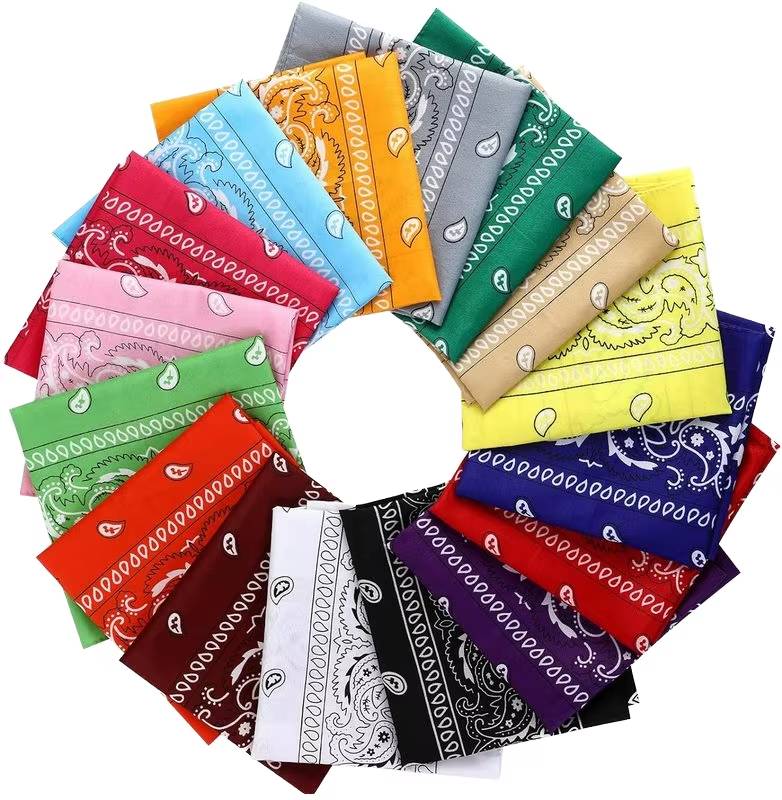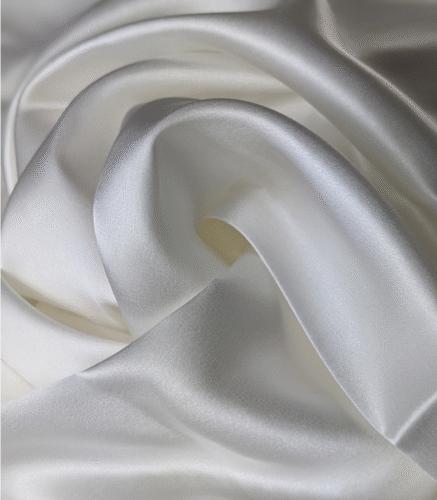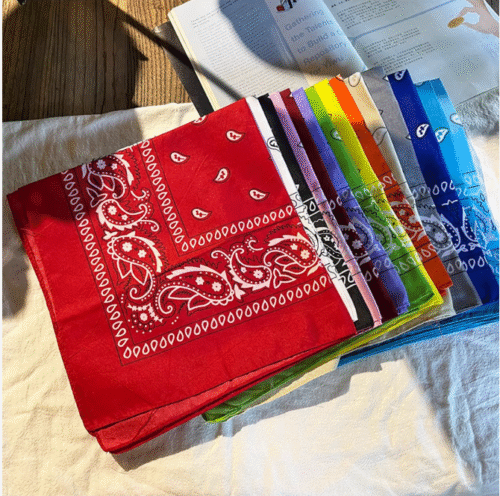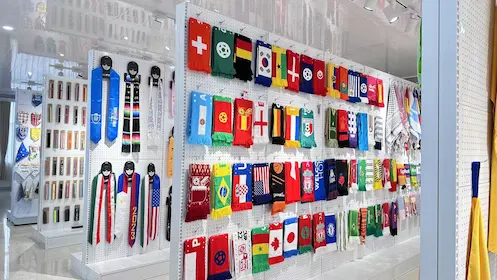Table of Contents
ToggleIntroduction
In recent years, more and more people have become fond of wearing headscarves, and with them, a growing number of styles have become popular on the market. Whether it’s the type of fabric, size, workmanship, or pattern, it can be difficult to choose the best value for money.
This article will explain the differences between different headscarves in terms of fabric, size, workmanship, and pattern, and how to choose the best bandana for you.
Popular best bandana Fabrics
Polyester bandana: This fabric is abrasion-resistant and wrinkle-resistant, easy to clean, and dries quickly. Polyester is relatively inexpensive and resists shrinkage and deformation, making it suitable for everyday wear, promotional gifts, and outdoor activities.
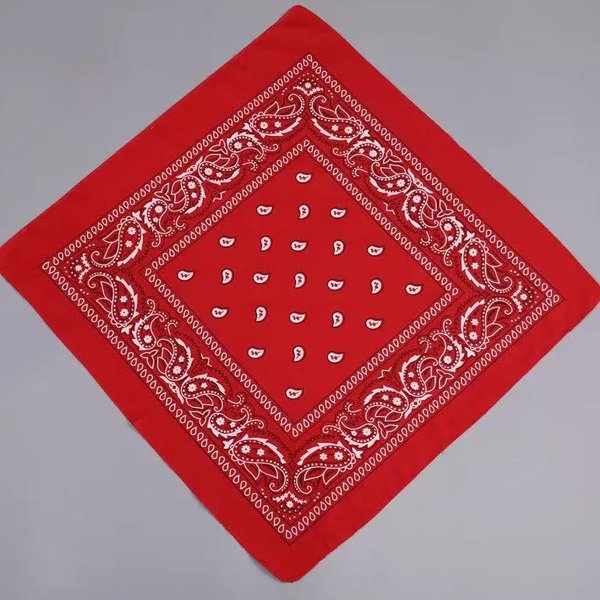
Cotton bandana:a natural fiber, is soft and breathable, but it can shrink easily and lose its shape with prolonged use. Its colors aren’t as vibrant as polyester. It’s suitable for mothers and babies, those with sensitive skin, daily wear, and household handkerchiefs. If you value comfort, this fabric is for you.
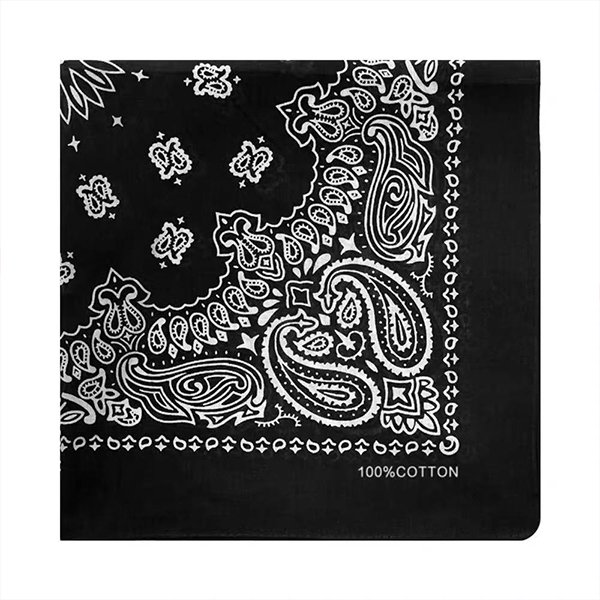
Satin bandana: Satin has a smooth surface, a silky feel, a good drape, and a vibrant color. However, it’s difficult to style, but it’s not resistant to friction and can easily generate static electricity. It’s suitable for wedding souvenirs, gift handkerchiefs, bag accessories, and headbands.
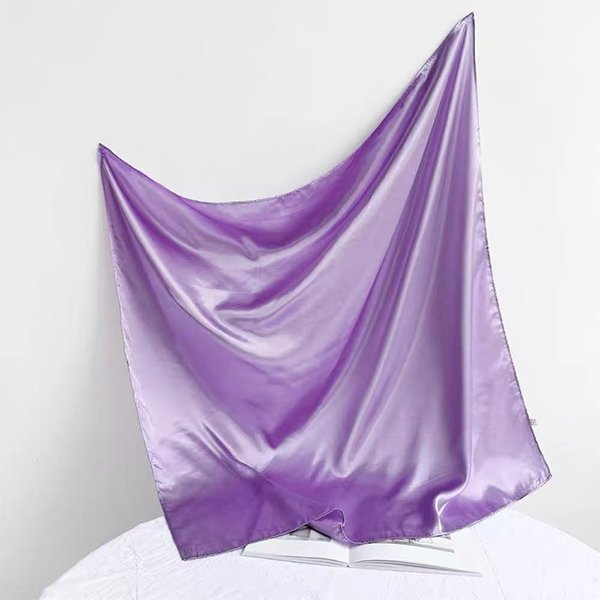
Linen bandana: A natural plant fiber, it’s highly breathable, wicks moisture, and becomes softer with each wash. However, it wrinkles easily, has a stiff feel, and features a rather plain print. It’s suitable for artistic accessories, outdoor travel accessories, and natural styles.
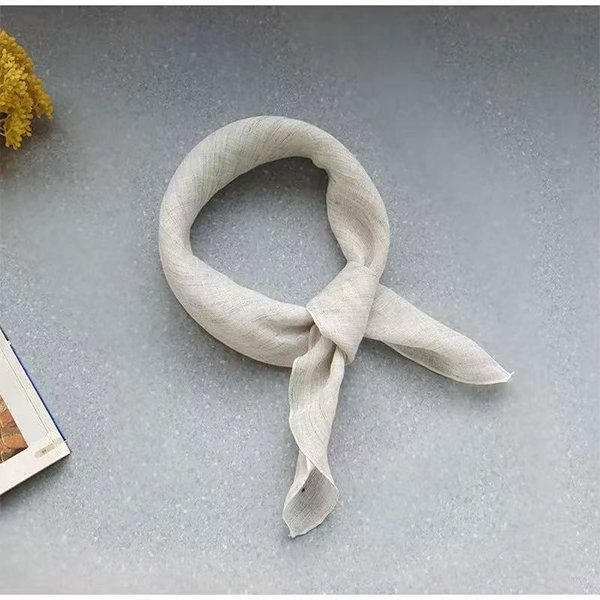
Bamboo fiber fabric bandana: Natural bamboo fiber is naturally antibacterial, breathable, soft, and highly absorbent. It also has antibacterial and deodorizing properties, making it suitable for sensitive skin. However, it’s more expensive and is suitable for maternity and baby products, sleep towels, and those who value health and environmental protection.
Polyester-cotton fabric bandana: A polyester and cotton blend, combining the advantages of both, is soft and skin-friendly, shrink-resistant, and more wrinkle-resistant than pure cotton. It’s also more breathable than polyester, but its overall absorbency and softness are still inferior to pure cotton, and it may pill after use. It’s suitable for factory towels, promotional gifts, and mid-range products.
Chiffon fabric bandana: Lightweight, transparent, soft, and flowing, it’s often used as a women’s accessory. It’s highly decorative, but it can snag easily and isn’t very durable, so be careful when washing. It’s suitable for women’s fashion squares, wedding headpieces, stage performances, and outdoor photo props.
Silk fabric bandana: a natural animal fiber, is smooth and delicate, soft like skin, and has a natural sheen and drape. It is light and elegant, but the cost is high and it takes time to maintain. It is suitable for customized high-end patterns, artist collaborations, brand logos and other personalized designs. It is suitable for high-end dinner parties and consumers with high requirements for quality of life.
Popular best bandana sizes
35cm x 35cm bandana: Mini scarf, compact and easy to carry, can be folded and used as a handbag decoration, headband, wristband, or folded as a corsage.
55cm x 55cm bandana:is the most common standard size, suitable for most adults. It can be used as a headband, face mask, neck scarf, wristband, or small bag decoration.
60cm x 60cm bandana :is looser than the 55cm size and more comfortable, suitable for taller and larger adults. It can be used as a headscarf, scarf, or neckerchief.
70cm x 70cm bandana: (Classic Large Scarf) is a larger size that can be used as a full head wrap, hair bandage, shawl, or travel shawl. The flexible size allows for more creative tying.
90cm x 90cm bandana shawl offers warmth and ample coverage, perfect for shoulders and back, similar to a small cape. It’s perfect for a full head wrap and complements formal attire, evening makeup, or stage looks.
120cm x 120cm bandana offers ample coverage and versatility, fully covering the head and shoulders. It can be used as a beach towel, a vacation photo prop, or as a table or sofa decoration, perfect for multi-purpose furniture.
Popular best Bandana Craftsmanship
Digital Print Bandana:
Digital printing uses high-precision inkjet technology to print patterns directly onto fabric. It supports complex designs, gradient colors, and photorealistic effects, eliminating the need for platemaking. This method is suitable for small-batch customization and is particularly well-suited for high-end handkerchiefs made from materials like silk and cotton, offering fast proofing and high pattern fidelity.
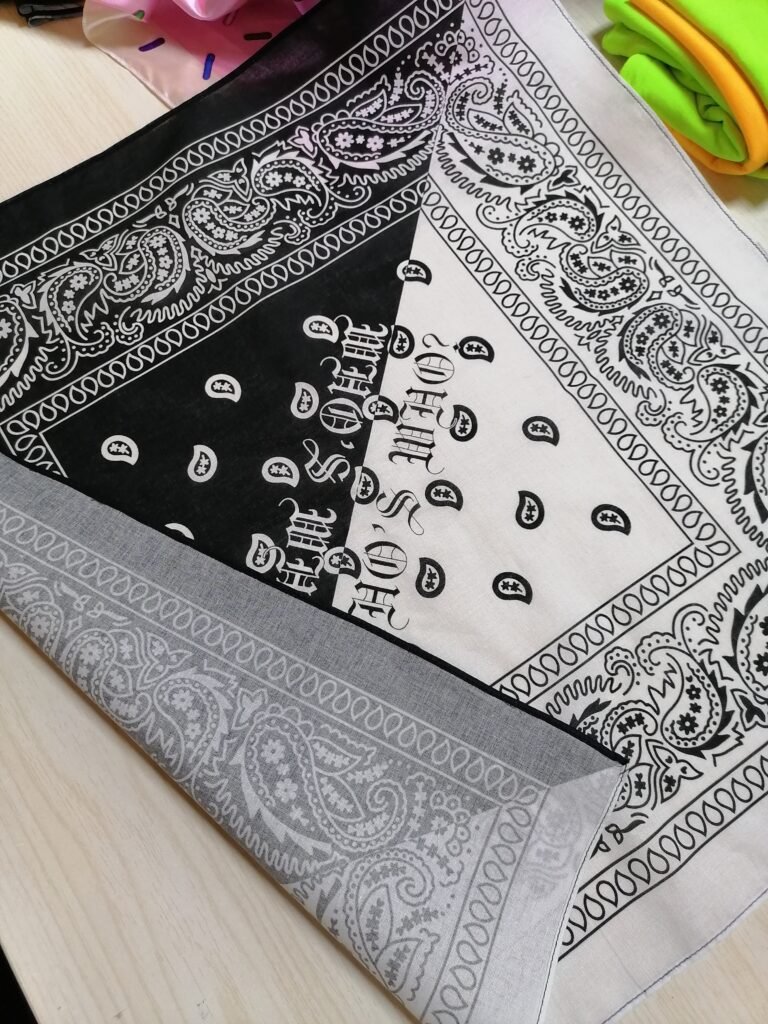
Reactive Print Bandana:
Reactive printing uses reactive dyes to chemically react with natural fibers like cotton, linen, and silk to create a fixed color. The resulting color is vibrant and highly permeable, resulting in a soft feel and excellent colorfastness. It resists fading after washing, making it an ideal choice for high-quality cotton or silk handkerchiefs.
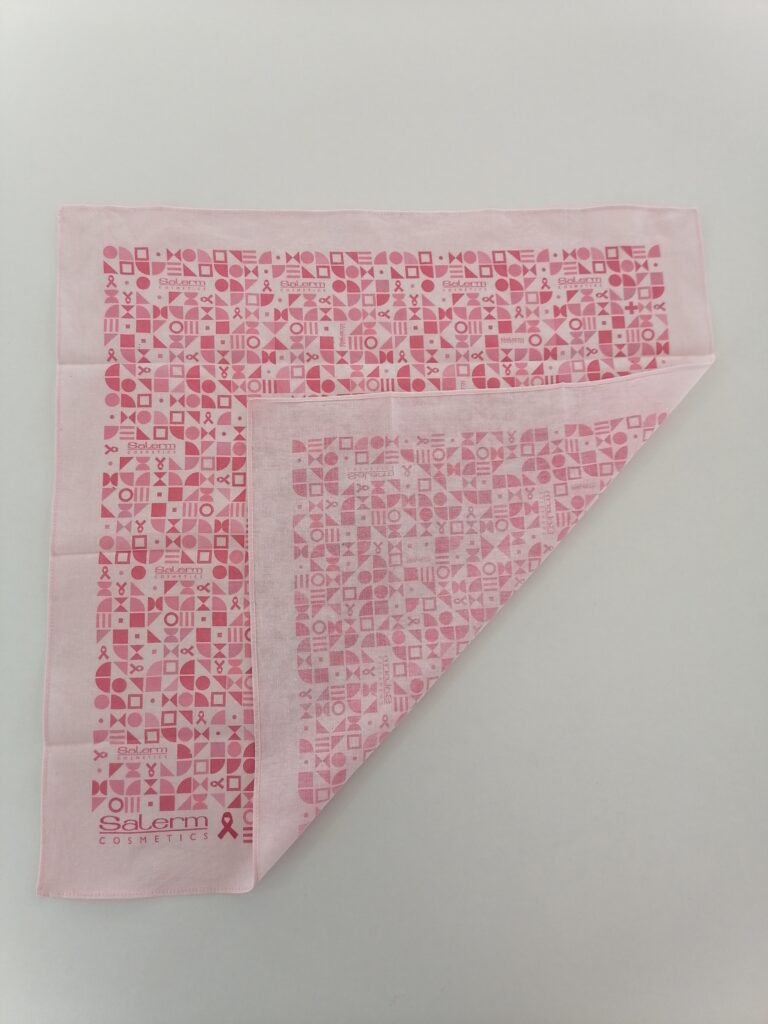
Disperse Print Bandana:
Disperse printing is specifically designed for polyester or polyester-blend fabrics. High temperatures are used to penetrate the disperse dyes into the fibers, resulting in durable coloration. The resulting pattern is clear, washable, and wear-resistant. It is cost-effective and suitable for large-scale production. It is commonly used for economical polyester handkerchiefs or outdoor products.
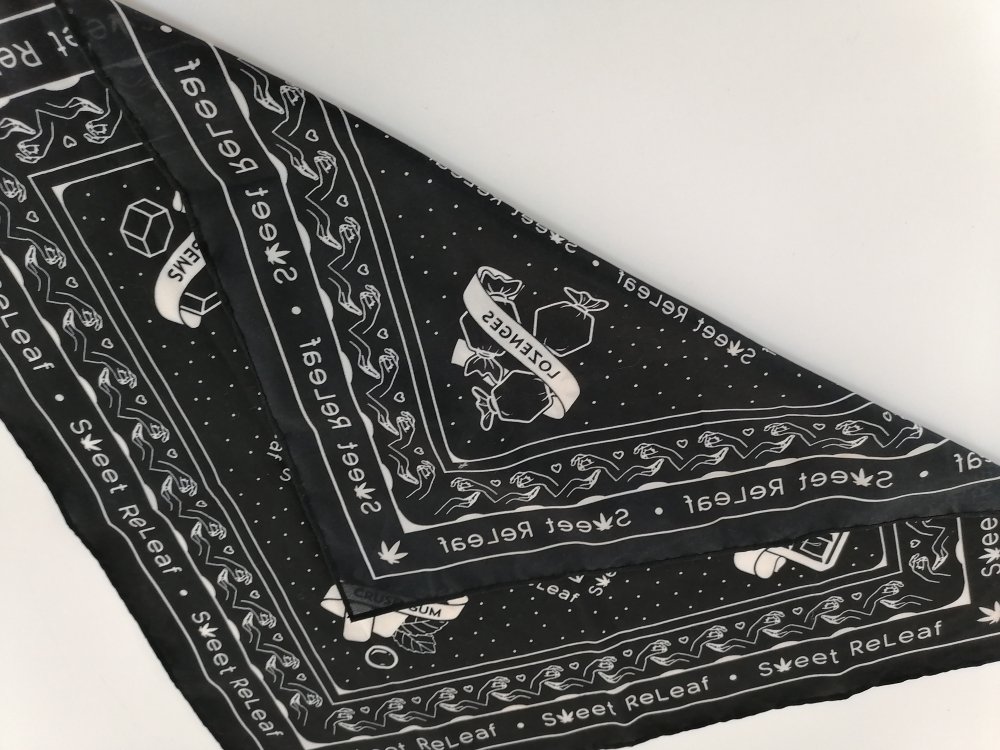
Screen Printing Bandana:
Screen printing uses a plate-making process to produce color-by-color printing, resulting in a thick, rich ink layer and rich colors. It’s suitable for large areas of color and simple patterns. The process is mature and stable, suitable for a wide variety of fabrics. It’s a common process for large-volume orders, such as custom logos and branded gift squares.
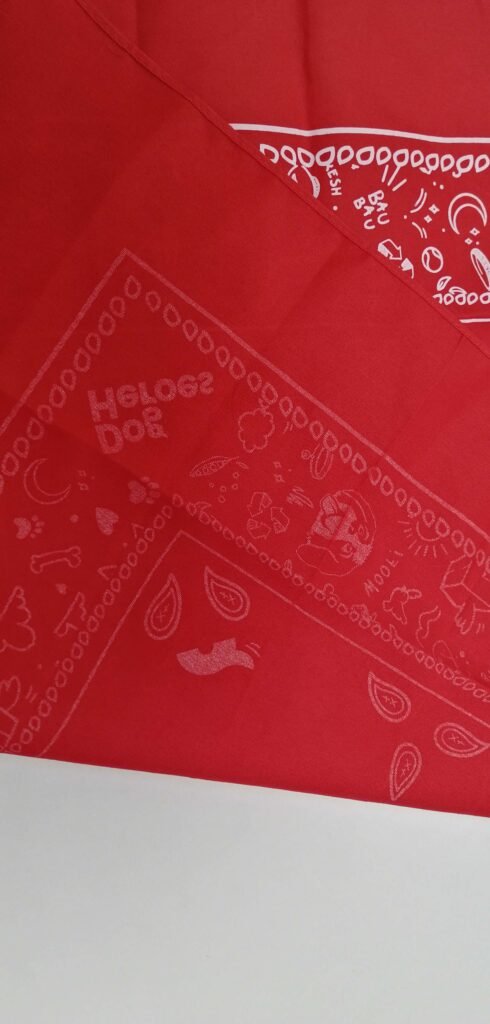
Popular Best Bandana Patterns
Paisley Bandana:
A classic swirling pattern, inspired by Persian art, exudes exotic charm and a vintage elegance, making it one of the most popular and timeless elements in silk scarf design.
Polka Dots Bandana:
A regularly arranged pattern of dots exudes a French-inspired, retro feel, creating a lively and versatile look suitable for both everyday wear and a sweet style.
Stripes Bandana:
Horizontal, vertical, or diagonal stripes create a simple yet stylish design with a rhythmic feel, showcasing a sophisticated aesthetic and perfect for both commuting and casual occasions.
Plaids Bandana:
Styles like Scottish plaid and houndstooth are representative of British style, offering a classic and enduring aesthetic, combining a preppy vibe with a retro charm, perfect for all seasons.
Floral Bandana:
Themes like roses, cherry blossoms, and abstract flowers create a romantic and soft aesthetic, brimming with springtime charm and popular with female consumers.
Cartoon and Anime Bandana:
Incorporating cartoon characters or anime IP elements creates a cute and fun design that appeals to young people and fans, making it suitable for both trendy brands and giftware.
Artistic Painting Bandana:
Paintings in oil, watercolor, or hand-painted styles create a strong artistic sense, creativity, and collectible value, often found on high-end designer scarves.
Ethnic Culture Bandana:
Incorporating ethnic totems, traditional patterns, or regional characteristics (such as African batik and Asian embroidery) showcases cultural charm and is suitable for cultural tourism products and specialty gifts.
Customization Bandana:
Customers can design their own patterns to achieve personalized expression. This product is widely used for brand customization, corporate gifts, and commemorative gifts.just contact us to make your own bandana
conclusion
Bandanas are stylish, functional accessories made from soft, durable fabrics like cotton, silk, or rayon. The classic paisley and diamond-dot patterns are most popular. Cotton is ideal for everyday wear, while silk offers luxury. Worn respectfully, bandanas suit anyone as a fashion statement, sun shield, or self-expression tool.
FAQ
What are high quality bandanas made of?
High-quality bandanas are typically made from cotton, silk, or rayon, with soft, tightly woven fabrics that offer comfort, durability, and vibrant print clarity.
What is the most popular bandana pattern?
The most popular bandana pattern is the paisley design, known for its teardrop-shaped motifs, followed closely by classic bandana print (diamond-shaped center with radiating patterns and dots).
Can a white person wear a bandana on their head?
Yes, anyone can wear a bandana on their head as a fashion accessory, for sun protection, or for practical purposes, as long as it’s worn respectfully and not associated with cultural appropriation or gang symbolism.
What fabric is good for bandanas?
Cotton is the most popular and practical fabric for bandanas due to its softness, breathability, and absorbency; silk is favored for luxury styles, while rayon offers a silky feel with vibrant printing.
